Join More Than 50,000+ Subscribers and get latest camera news and rumors
NEW CAMERA VIDEOS ON YOUTUBE
|
By admin, on March 11th, 2025
Best Budget Wildlife Lenses for Sony E-Mount in 2025: Native and Third-Party Options: Sony mirrorless cameras have actually revolutionized wildlife photography with their innovation, specifically in autofocus mechanisms, as well as lightweight design and the most important and expensive lens ecosystem, which is continuously expanding. So, if you shoot with full-frame cameras like the Sony Alpha A1, it’s kind of a powerhouse, or an APS-C camera like the Sony A6700, finding the right lens on a budget is really a tough job. Breaking a bank account while buying your favorite lenses is not always a good idea. So, we have selected the best budget wildlife lenses for Sony E-Mount that include Sony native offerings as well as the best third-party lens options for Sony E-Mount from Sigma, Tamron, and more. All these are updated for 2025. The lenses that we have selected are the best in their focal length and give you the maximum reach possible.
Wildlife photography generally demands longer focal length lenses. If you own a 300mm lens, then you can shoot sunset, sunrise, and big animals like elephants or hippopotamuses perfectly. But if you want to shoot birds or small animals, then either they have to be very close to you, or you have to buy lenses like 500mm or more. However, you don’t need to spend $10,000 on getting a Sony FE 600mm F4 GM lens to get professional-level results. What we have done is prioritized affordability as well as the performance of a lens, starting with lightweight options that fit the budget, like the Tamron 70-300mm F4.5-6.3 RXD, the lightest telephoto lens under $600. So, that’s just one example. Let’s dive into the top and best lenses for 2025, covering both full-frame and APS-C mounts.
Why Choose a Budget Wildlife Lens for Sony E-Mount?
Sony E-Mount system is heaven for wildlife photographers, thanks to the introduction of camera bodies with AI autofocus systems, starting from base models like the Sony A6700. Cameras with a 1.5x crop factor are perfectly fit for wildlife photography as well as bird photography since they give you extra reach. These lenses strike a balance between cost and capability, making them ideal for beginners or anyone looking to upgrade from the standard kit lens. So, here’s what to look for before picking your next lens:
- Focal Length: 300mm+ for capturing large animals, and 500mm+ for bird photography.
- Aperture: A wider aperture is always better (f/2.8–f/6.3) for low-light shooting, though budget options often lean toward f/5.6–f/6.7.
- Stabilization: Always look for Optical SteadyShot (OSS) or in-body stabilization (IBIS) helps with handheld shots.
- Weather Sealing: Essential for outdoor shoots in unpredictable conditions.
- Price: Pocket-friendly
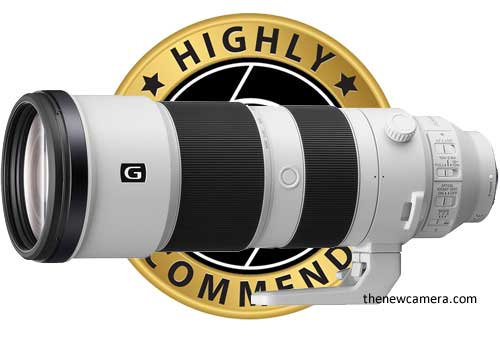
1. Top Budget Wildlife Lenses for Sony E-Mount – Sony FE 200-600mm F5.6-6.3 G OSS
- Sony FE 200-600mm F5.6-6.3 G OSS
- Price: ~$1,998 [ B&H Store and Amazon.com ]
- Focal Length: 200-600mm
- Aperture: f/5.6–6.3
- Weight: 2,115g (74.7 oz)
- Best For: Full-frame versatility, wildlife action
Sony FE 200-600mm F5.6-6.3 G OSS is the gold standard for budget-conscious Sony wildlife photography shooters. This lens offers an impressive 200 to 600mm zoom range, which makes it perfect for large animals like elephants and hippopotamuses. If you are using APS-C cameras like the Sony a6700, you can also do bird photography flawlessly since the equivalent focal length you will be getting is approximately 900mm.
And since it’s a Sony lens, it also supports teleconverters like 1.4x and 2x. So, if you are using a 1.4x teleconverter on your APS-C camera, and since it’s a full-frame lens, the quality will remain the same, and you will get additional reach up to 1260mm while using the 1.4x teleconverter.
Now, let’s talk about the lens. At $1,998, it’s a steal deal compared to Sony’s other G Master prime lenses. Its internal zooming mechanism and very effective stabilization help you shoot handheld images perfectly. Although it’s not that lightweight to carry all day, you should keep a hybrid monopod along with you.
Pros:
- Exceptional reach with teleconverter compatibility (1.4x or 2.0x).
- Fast, silent autofocus powered by Sony’s Direct Drive SSM.
- Optical SteadyShot with three modes for static or panning shots.
- Weather-sealed for rugged outdoor use.
Cons:
- Variable aperture narrows to f/6.3 at 600mm, limiting low-light performance.
- Heavy for all-day carry without a tripod.
Why It’s Great:
With bodies like the Sony a6700, you get a built-in IBIS mechanism, and when paired with this lens, you get very smooth and stable footage and snaps, even when shooting handheld. At the same time, the focal length jumps to 300 to 900mm, which is an insane focal length for an under-$2000 price range.
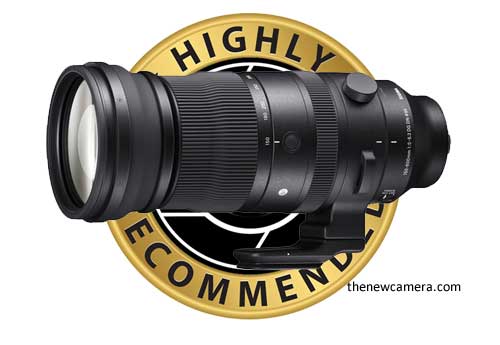
2. Sigma 150-600mm F5-6.3 DG DN OS Sports: Best Affordable Zoom Lens for Wildlife & Sports Photography
Sigma 150-600mm F5-6.3 DG DN OS Sports
Price: ~$1,499 [ B&H Store and Amazon.com ]
Focal Length: 150-600mm
Aperture: f/5–6.3
Weight: 2,100g (74.1 oz)
Best For: Maximum reach on a budget
Sigma 150-600 is a third-party powerhouse lens that has been considered a direct competitor to the Sony FE 200-600mm at a lower price. Technically, it’s one of the best third-party lenses available to date. If you use it on your APS-C body, the equivalent focal length that you will be getting is 225 to 900mm.
Pros:
- Longest 600mm reach with robust image stabilization
- Fast autofocus and four stops of optical image stabilization even at the tele end
- Durable, weather-sealed build
- Very sharp at the center throughout the zoom range when used on an APS-C body
Cons:
- We are not able to use teleconverters with third party lenses
- Heavy and bulky for handheld use
- Softer edges at 600mm when used with a full-frame sensor
Why It’s Great:
For just $1,499, you are getting an amazing lens at this price point, and literally, there is no competition for the Sigma 150-600mm at this price with its optical performance, making it a top-budget choice for distant subjects like raptors or safari animals.
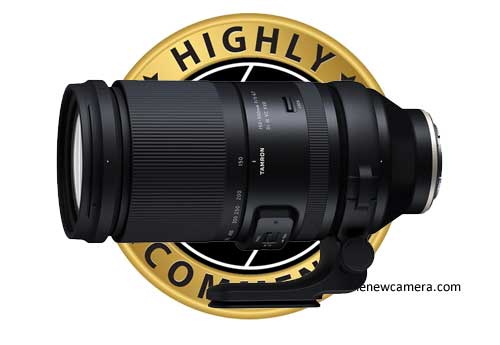
3. Tamron 150-500mm F5-6.7 : Best Budget Super-Telephoto Lens by Tamron for Sony E-Mount
Tamron 150-500mm F5-6.7 Di III VC VXD
Price: ~$1,199 [ B&H Store and Amazon.com ]
Focal Length: 150-500mm
Aperture: f/5–6.7
Weight: 1,725g (60.8 oz)
Best For: Lightweight full-frame option, budget buyers
Tamron’s 150-500mm F5-6.7 Di III VC VXD, I think this is the best lens available at this focal length and at this price point, which is approximately $1,200 or less sometimes during deals and offers. This is one of the most reasonably priced super telephoto zoom lenses for the Sony mount, and it is more compact and easy to carry compared to the Sony 200-600mm. Although Sony is always number one with its native lenses, specifically when we are talking about lenses like the 200-600mm that support teleconverters, as well as its OIS being very, very effective. So, if you are not able to spend $2,000 on buying the Sony 200-600mm lens, then the next best investment in the low-budget range is the Tamron 150-500mm.
Pros:
- It’s the lightest super telephoto lens with a very effective optical image stabilizer
- Newly developed VXD autofocus motors act very fast
- Sharp across the zoom range with pleasing bokeh
- Weather-sealed with a zoom lock for travel
Cons:
- No teleconverter support (Sony restriction on third-party lenses)
- Slightly softer edges at 500mm compared to Sony G lenses
Why It’s Great:
For under $1,200, you get 150-500mm (225-750mm on APS-C), making it a fantastic budget pick for wildlife enthusiasts who prioritize portability over absolute reach.
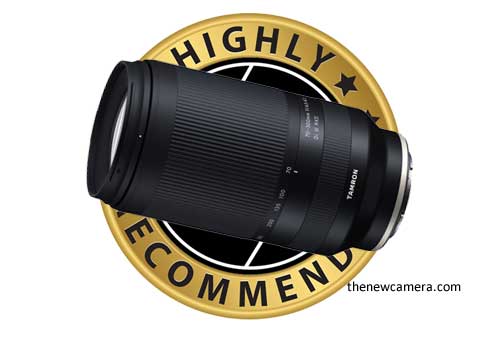
4. Best Budget 300mm Lens? Tamron 70-300mm F4.5-6.3 for Sony APS-C & Full-Frame
Tamron 70-300mm F4.5-6.3 Di III RXD
- Price: ~$550 [ B&H Store and Amazon.com ]
- Focal Length: 70-300mm
- Aperture: f/4.5–6.3
- Weight: 545g (19.2 oz)
- Best For: Lightest full-frame telephoto under $600, budget portability
This is the cheapest third-party 300mm zoom lens available for Sony E-mount. The RXD motors offer fast autofocus, and while using an APS-C sensor-based camera, you get a range of up to 450mm. It’s a very good lens for wildlife photography, especially considering the price we have to pay and the focal range that we are getting with this lens. But at the same time, there is no optical image stabilization. If we are using this lens with an a6700 camera, then there is no need to worry. Although, for wildlife photography, I always recommend having a hybrid monopod with you to get super stable and sharp shots.
Pros:
- Featherlight at 545g—ideal for handheld shooting with IBIS bodies
- Affordable at $550, often dipping lower during sales
- Weather-sealed for outdoor reliability
- Sharp center performance with fast RXD autofocus
Cons:
- No optical stabilization (relies on IBIS)
- Softer edges at 300mm when used with full-frame sensors
Why It’s Great:
Wildlife shooters who are looking for great reach on a budget with their APS-C or full-frame bodies will find this the best budget wildlife photography lens made by Tamron for Sony E-mount. On APS-C, its 450mm equivalent rivals pricier lenses, making it a top budget pick for casual wildlife photography.
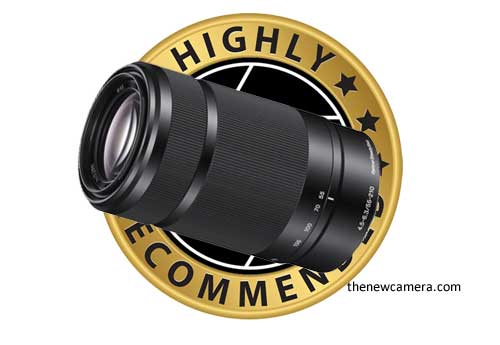
5. Cheapest Wildlife Lens for Sony APS-C? Sony E 55-210mm
Sony E 55-210mm F4.5-6.3 OSS (APS-C)
- Price: ~$298 [ B&H Store and Amazon.com ]
- Focal Length: 55-210mm (82.5-315mm equivalent)
- Aperture: f/4.5–6.3
- Weight: 345g (12.2 oz)
- Best For: APS-C beginners, ultra-budget shooters
The cheapest lens for Sony E-mount, designed for entry-level APS-C users. This lens typically comes with the camera as part of a dual kit lens setup, but yes, you can also use this lens for shooting sunsets, sunrises, and birds sitting next to your window in a tree, provided they are in a location that allows for this. The lens is the cheapest wildlife photography lens available for Sony E-mount, offering a maximum equivalent reach of up to 315mm and is designed for APS-C sensors only. It’s an ideal deal for entry-level wildlife photography users.
Pros:
- Dirt-cheap price under $300
- Lightweight and portable
- OIS SteadyShot for steady shots
- Decent sharpness in good light
Cons:
- Narrow aperture limits low-light use
- Incompatible with full-frame bodies
Why It’s Great:
Pair it with an APS-C body for a 315mm reach—perfect for backyard birds or local parks on a shoestring budget.
Sony Native vs. Third-Party: Which Should You Choose?
- Sony mid-range lenses are, of course, of superior quality, specifically the G-series lenses, which are custom-tailored for performing seamlessly with Sony’s autofocus system. All these lenses support teleconverters, which is highly essential for wildlife photography. Other than that, basic lenses also offer OIS integration and fast AF motors. If your pocket allows, always go with the Sony native lenses.
- Third-party lenses are wonderful if you see their price tag. They are sometimes almost half the price of Sony lenses of the same focal length, and in wildlife photography, the most important thing is the reach—aka the range you are getting from your telephoto lens. Yes, there are some performance limitations, like not being able to use teleconverters, and some telephoto lenses exhibit soft corners at the tele-end when used with a full-frame sensor. But again, if you are limited to a certain budget, the best option is to buy third-party lens options and use an APS-C body like the Sony a6700 camera.
Verdict: If you prioritize autofocus speed and teleconverter options, go native. For budget savings and portability—like the Tamron 70-300mm’s lightweight edge—third-party lenses are unbeatable.
Budget Wildlife Photography Tips for Sony E-Mount Users
- Use of an APS-C body is highly recommended if you are into wildlife photography. It will not only boost your focal length by 1.5x but also reduce soft corner issues to a great extent by using the sharper center portion of the lens.
- Always have a hybrid monopod with you. Heavy lenses like the Sigma 150-600mm or Sony 200-600mm need the support of a very strong body or a hybrid monopod/tripod, so decide accordingly.
- Budget wildlife photography generally involves lenses with an aperture range of around f/5.6 to f/6.3, so try to position your subjects in direct sunlight.
- We now have software like Gigapixel AI at our disposal, along with significant advancements in recent Photoshop and Lightroom editions. So, try to learn the latest editing techniques to stay updated with the times.
Final Thoughts: The Best Budget Wildlife Lens for You
Sony FE 200-600mm F5.6-6.3 G OSS is our top budget pick for its amazing reach, versatility, native performance, and the ability to use a teleconverter—all these features under $2000. Now, the next best lens on our list is the Tamron 150-500mm F5-6.7 Di III VC VXD at $1,199 due to its portability and price, although it has 100mm less reach than the Sony 200-600mm and is not compatible with teleconverters.
And finally, the best entry-level lens, the Tamron 70-300mm F4.5-6.3 Di III RXD, steals the show as the lightest full-frame telephoto under $600. Now, if you are looking for some kind of super budget lens, then yes, you can start with the Sony E 55-210mm F4.5-6.3 OSS at $298.
So, from this article, it is very clear that no matter what your budget is or which camera body you are using, the lenses we have selected prove that you don’t need to spend a fortune or break your bank to capture breathtaking wildlife shots. Also, let me know which one is your favorite—drop a comment, share this article with your wildlife photography friends, and share your journey with us!
Updated March 10, 2025, by TheNewCamera.com Team
Support us – Use or affiliate link Amazon.com | B&H Store | Adorama.com for the next purchase u make – it helps us 🙂
Follow us on our social pages FACEBOOK | TWITTER | INSTAGRAM to get live Camera News
By admin, on February 28th, 2025
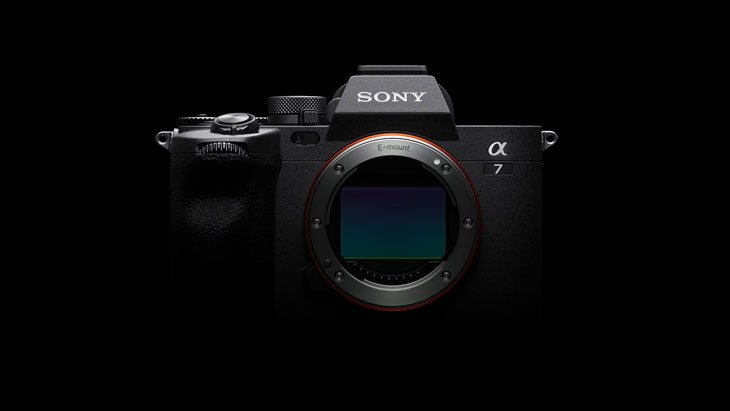
According to the latest coming from rumor mill, the Sony A75 camera has been delayed. Earlier, it was expected sometime in April 2025, but the recent information coming from trusted sources of the rumor mill suggests the camera will arrive sometime in late 2025.
The exact reason is not known yet, take a look at what the sources of the rumor mill said about the dealy
Source 1
The Sony A7V is ready but Sony is waiting for Canon R6III to make the first pricing move in this segment, and are willing to postpone the A7V launch if they have to.
Source 2
The Sony A7v will be delayed, unfortunately a lot.
It could be so bad that it won’t come until the end of the year, late autumn at the earliest. This is information I have received from the depths of Sony.
Source 3 (trusted source):
Sony is still having problems producing enough Sony A1II cameras. This is also a reason why they are waiting with the launch of the new A7V. The production of the A1II should reach the targets by the end of March/April.
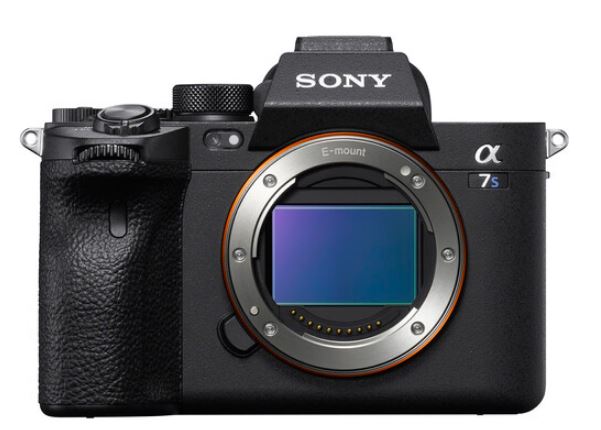
Sony A7S IV announcement this year
Now finally, one more important piece of information related to the upcoming camera—Sony will be announcing the A7S IV camera this year, and that’s the hint that we have received from the rumor mill. It’s not the A7R6 or the A75, which has been delayed, of course. We already have updates on the Sony A93 camera recently, which is not too old with a newer Global sensor and advanced processing power.
The only leftover series that actually needs an URGENT update in the consumer-level mirrorless lineup of cameras is the Sony A7S series, which has been continuously ignored and is still waiting for an update. So, we are expecting the arrival of the A7S4 this year. We will keep you updated as soon as we get any new information related to the upcoming camera.
Follow us on our social pages FACEBOOK | TWITTER | INSTAGRAM, If you have time –>see more Sony Alpha Rumor
source sonyalpharumors.com
By admin, on January 21st, 2025
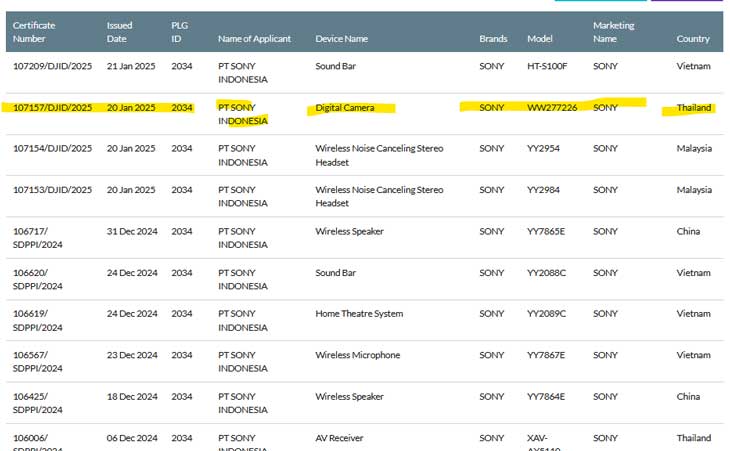
Sony registered a new camera with the wireless certification agency, and the model code of the camera is WW277226. What we are expecting for now is the Sony A7 V camera, since if we pick up the rumors we just published recently [ Sony A7V surfaced at wireless certification agency and Sony A7 V and Sony 50-105mm F2.8 Lens Coming], it all indicates that Sony is planning to announce the A7 V camera in early 2025, as per the Sony rumor mill that the announcement may happen in March 2025. Generally, whenever camera makers like Sony, Nikon, or Canon register a camera with the wireless certification agency, they take 2–3 months to announce their product in the market. And since the Wireless certification details of the Sony A7V camera surfaced back in December it’s quite obvious that the camera is expected to arrive in March 2025.
Now about WW277226 – it’s one more camera in the two, WW277226 is not Sony A7V it’s something else although the name isn’t known yet. But since it has been surfaced today [on January 21st, 2025] the announcement of the Next ALPHA camera after the Sony A7V is expected sometime in April-May 2025.
Sony Upcoming Camera Model Codes 2025
1. WW 773396 – Sony A7 V [Registered on December 5th, 2024]
2. WW277226 – Model Name Unknown [Registered on January 21st, 2025]
We will update you when we get any new information about the upcoming Sony A7 V camera.
Check out more
Wild Rumors: Sony FX30 II, Sony FX30 R and Sony ZV-E1 II Coming in 2025 | Sony Upcoming Cameras 2025
Follow us on our social pages FACEBOOK | TWITTER | INSTAGRAM, If you have time –>see more Sony Alpha Rumor
By admin, on January 20th, 2025

According to the latest, Sony will announce the FE 50-105 F2.8 lens at the end of February 2025. At the same time, Sony is highly likely to announce the Sony A7 V camera in March 2025.
We have gathered a lot of information about the Sony A7 V camera in the past [check all updates here Sony A7 V], and the latest set of details suggests that the camera may feature a 44-megapixel sensor. However, in the past webio (Chinese sources) suggested that there is also the possibility of a 33-megapixel stacked CMOS sensor. So, if we concentrate on all the information received over the past year, it creates two possibilities: either the camera will come with a 44 MP BSI CMOS sensor or a 33 MP stacked CMOS sensor.
Again, we are waiting for further confirmation. If received, we will post an update very soon.
Check out more
Wild Rumors: Sony FX30 II, Sony FX30 R and Sony ZV-E1 II Coming in 2025
Follow us on our social pages FACEBOOK | TWITTER | INSTAGRAM, If you have time –>see more Sony Alpha Rumor
source – SAR.com
By admin, on January 3rd, 2025
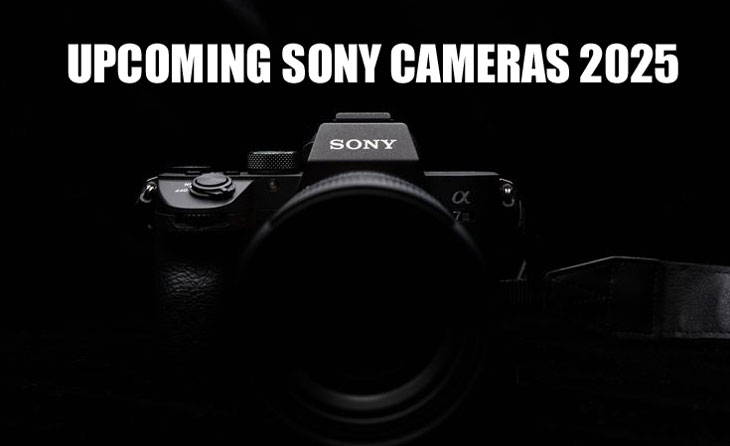
Sony’s upcoming cameras in 2025: Content creators, photographers, and filmmakers are eagerly waiting for the announcement of Sony’s 2025 series of cameras. Specifically, they are very curious about the upcoming Sony A75, Sony FX3 Mark II, and Sony A7S IV. Although the list is not limited to only these three, several other models are also expected to arrive in 2025, as mentioned in the article below.
Nikon Upcoming Camera 2025 | Canon Upcoming Cameras 2025
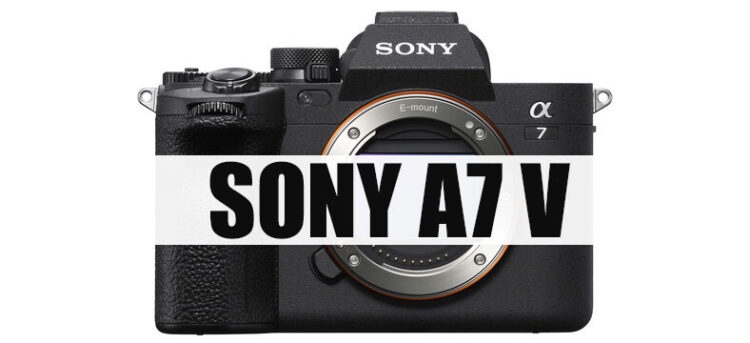
1. Sony A7 V
If they strictly follow their schedule, Sony’s next announcement will most likely be a cinema camera, probably the Sony FX3 Mark II or the Sony A7S IV camera.
But when will the Sony A7V camera arrive? According to current rumors, it is expected to arrive on or before April 2025 (90% chance). However, if delayed, the announcement could be extended to October 2025.
Recent rumors suggest that Sony is testing prototypes with the IMX366 sensor, which has a 44-megapixel resolution. The good thing about this sensor is that despite being a non-stacked sensor, the readout speed is very fast. The camera will be paired with Sony’s latest BIONZ X image processor and AI chip. This is not the first time we have gotten hints of a 44 Mp sensor, check here Unbelievable! Sony A7 V May Feature a 44-Megapixel Sensor
This looks impressive if the camera arrives with Sony’s latest IMX366 sensor. It will surely raise the competition level. Again, the model will have a decent price increase, and it will likely fall in the same category as the existing Canon R5 camera.

2. Sony FX3 Mark II
According to the latest information, there is a very high possibility that Sony will announce the Sony FX3 Mark II camera in 2025. Of course, there was a set of leaked specifications coming out from Chinese forums suggesting that the Sony FX3 Mark II camera may have a global sensor from the A9 III, but I am not convinced by these rumors.
Along with that rumor, we also have hints from rumor mills suggesting that we may see a 24-megapixel partially BSI stacked sensor, similar to the one recently seen in the Nikon Z6 Mark III camera, inside the Sony FX3 Mark II. This would enable the camera to record 6K video at up to 60fps and 4K video at up to 120fps.
So, that seems a bit more feasible. As soon as I get any updates related to the upcoming FX3 Mark II camera, I will post them on my website.

3. Sony A7S Mark IV
Apart from these two (FX3 and A7 IV), we have the Sony A7S Mark III update pending, which was announced on 28 July 2020. If you compare the announcement dates, the most outdated A7 series mirrorless camera right now is the Sony A7S III camera. So the Sony A7S IV announcement is Imminent in 2025.
Several rumors in the past have pointed to a new sensor, an image processor, and the introduction of an AI chip inside the A7 series. As we all know, the A7S series is designed for sensitivity, making it a high-performance series. It is also tailored for professional cinematographers who love the A7-style body with professional videography features they generally find in FX series cameras.
Now, here comes the contradiction: if Sony updates the FX3 Mark II camera, they may further postpone updates to the A7S series for at least one more year, to protect the FX3 II camera sales. On the other hand, if they update the A7S III camera—meaning they announce the A7S Mark IV camera—then there is a slight possibility that the FX3 Mark II update could be delayed by at least a year.

4. Sony RX1R Mark III
Let’s discuss the RX1R Mark 3 camera. A competitor of the Leica Q3, it is expected to be announced sometime in the year 2025.
The Sony RX1R series was in a kind of hibernation state for a while, but right now, the rumors are getting very strong regarding their next full-frame camera with a 61 MP BSI stacked sensor that we have seen in the Sony A7R 5 camera. The lens is expected to remain the same—the 35mm F2 lens—but this time, the camera will also feature an advanced AI Processing Unit. So, more or less, it will become one of the most advanced full-frame compact cameras in the world and a direct competitor and even a budget alternative to the existing ultra-popular Leica Q3.

5. Sony FX30 Mark II
As per the latest rumors, Sony is currently testing two different prototypes of the FX30-style body. One has a 26MP sensor with the latest BIONZ XR image processor, and the other body carries a 40MP sensor with the advanced BIONZ XR image processor and, of course, a dedicated AI chip. Now, it’s very interesting to see which of the models is selected for the final production line.
To be very clear, if they select the FX30 prototype with the same 26MP sensor and an updated BIONZ XR image processor as well as the dedicated AI chip, that means a subtle upgrade in the core specification of the camera and we won’t notice a major price hike, That being said, the FX30 II camera price will remain similar to the FX30’s announcement price.
But if they bring out major upgrades and select the 40MP camera prototype with 8K video recording capability, then for sure we will also witness a Major price hike in the FX30 series camera, and most importantly it can be announced as Sony FX30 R camera.
Sony FX30 Mark II Specification
- Sensor: 26Mp / 40MP APS-C BSI CMOS. [Sony testing our High Resolution sensor too, possibly for FX30 II or FX 30 R]
- Processor: BIONZ XR with advanced AI chip.
- Video:
- 8K recording support.
- Enhanced 4K oversampling.
- AI Features:
- Predictive autofocus for humans and 3D objects.
- Advanced subject recognition and tracking.
- AI Auto-Reframing and Dynamic Composition.
- Build: compact FX30 style, durable body.
- Target Audience: Professional videographers and creators.
The possibilities remain exciting, but they exist in the realm of speculation until officially confirmed.
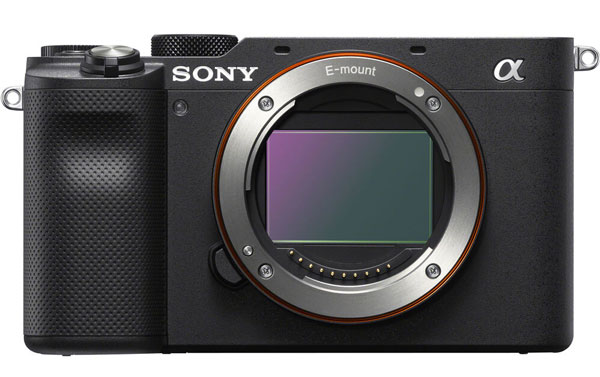
6. Sony ZV-E1 Mark II
The Sony ZV-E1 Mark II is rumored to be announced sometime in 2025. The Sony ZV-E1 was announced back on 29 March 2023, but unfortunately, the camera has a weak heat sink unit. That’s why most professional content creators and podcast creators hesitated to buy this particular model. Early reviews of the ZV-E1 camera suggest it can overheat during 4K 60p video recording, under hot and humid conditions, longer recording sessions are not possible with this camera.
Another big reason was the absence of 4K 120 FPS and Full HD 240 FPS modes in this camera. Despite paying a huge amount to get this body, most users complained that they were not able to access the 4K 120 FPS mode, which is present in the Sony A7S Mark III camera. Moreover, the hardware specifications of both cameras are almost identical.
Specifications of Sony ZV-E1 Mark II Camera
- Sensor: Full-frame 12MP.
- Processor: BIONZ XR with AI.
- Video: 4K 120 FPS, Full HD 240 FPS.
- Heat: Improved heat sink.
- AF: Enhanced AI Eye AF.
- Build: Durable, vlog-friendly.
- Connectivity: Advanced wireless/streaming.
So, Sony may refresh this model with the ZV-E1 Mark II camera by adding the latest series of BIONZ XR image processors and an AI Processing Unit, as well as unlocking modes like 4K 120 FPS and Full HD 240 FPS in the new version of the camera. The most important thing they missed in the original ZV-E1 was the very weak or poor heat management system. This time, at least, they should add a proper heat sink mechanism that won’t allow the camera to overheat while recording in uncontrolled weather conditions.
Let’s hope for the best that Sony will announce the ZV-E1 Mark II camera in 2025 with a set of upgrades that will allow users to buy it for professional use.
Follow us on our social pages FACEBOOK | TWITTER | INSTAGRAM, If you have time –>see more Sony Alpha Rumor
By admin, on January 3rd, 2025
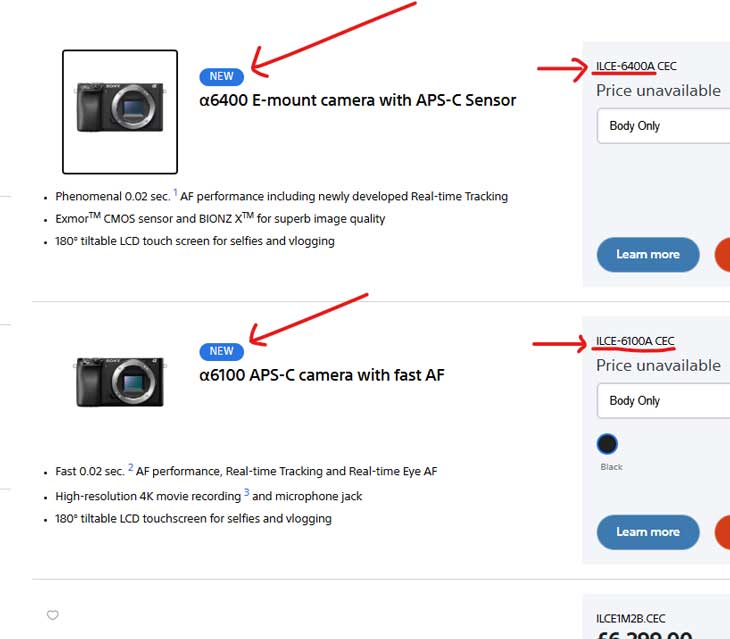
These two updated models first appeared on the Sony UK website. After closely examining the core specifications of both cameras, there were no noticeable differences.
Previously, when Sony updated full-frame models like the Sony a7R IIIa and the Sony a7R IVa, they upgraded the
- LCD screen from 1.44 to 2.3 million dots.
- Both cameras were also upgraded to a USB 3.2 port.
- The new display monitors do not have the Sony logo.
- Battery life remains the same since both the new and old models use NP-FZ100 batteries.
It has generally been observed that when brands face issues with display manufacturers, they tend to update models silently. This has been more common with Panasonic cameras.
So, what has Sony updated in the new a6400a and a6100a models?
Now instead of charging Sony’s AC-UUE12 AC-USB adaptor Sony is supplying BC-TRW standalone chargers with these models, you have to physically remove the battery from the camera and put it in the charging station, it is better than in-camera charging, and also batteries get re-filled at a fast pace.
Follow us on our social pages FACEBOOK | TWITTER | INSTAGRAM, If you have time –>see more Sony Alpha Rumor
source www.sony.co.uk
By admin, on January 1st, 2025

According to the latest rumors surfaced the Sony A7 V camera is coming very soon. Sony may announce a brand new camera at CES 2025, and according to their information, it could be the A7 V camera. The information is coming out from Camerabeta(webio), so we have to take it with a grain of salt
At the very same time, just prior to the official announcement of a camera, we generally get a lot of leaks, like leaked images, core specifications, and all these kinds of hints for 10 or 15 days before an official announcement. The big reason behind that is that a lot of review units get distributed just prior to the announcement of any camera to create sample reviews and a kind of positive environment.
However, the entire situation is quite dry, which doesn’t indicate a major announcement in the next 15 days.
But again, if we get any information related to upcoming cameras or lenses, we will update you very soon. Stay tuned for upcoming updates!
Also see
Sony A7 V Surfaces at Wireless Certification Agency
Sony A7 V Rumors: A 44MP Sensor and AI Power – What You Need to Know!
Follow us on our social pages FACEBOOK | TWITTER | INSTAGRAM, If you have time –>see more Camera News and Sony Alpha Rumor
|
KEEP THIS BLOG ALIVE - Support New Camera Buy Canon Lenses, Buy Music CD or Digital Camera at amazon it helps this site, and you do not pay anything extra, it is just a way to help support this site.

|




















